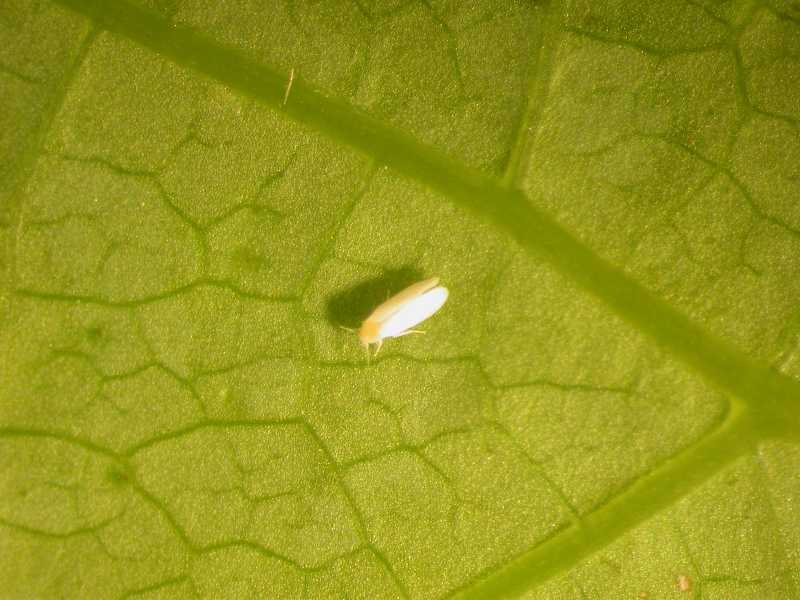 |
Close-up of adult whitefly (Hemiptera) |
Whiteflies are common on houseplants and in greenhouses. They are piercing-sucking insects found on the underside of leaves. When disturbed on a heavily infested plant, a white cloud of adults will fly into the air. A large infestation can cause plant damage and loss of leaves. In most cases, it is more of a nuisance than a threat to the plant. Since homes and greenhouses are always warm, they can reproduce throughout the year.
When purchasing new plants, always check under the leaves making sure pests are not present. Also, check branching areas for pests. In the home make a habit of checking the underside of leaves when you water. They are easiest to remove at an early stage. In most cases, the pest will not be spotted until there are adults flying around the plant when they are disturbed.
Symptoms and Diagnosis
Identification of the whitefly is easy as an apparent white cloud of small snowflakes rises from foliage when disturbed. The adults are about 1/10 to 1/16 inch in length, wedge shaped, and moth-like with white, powdery wings.
Symptoms vary—infested leaves may show little, if any, symptoms or may be mottled and yellow. Leaves will also become coated with a sticky substance called honeydew that is secreted by feeding whitefly nymphs and adults. A black, sooty mold may sometimes grow on the honeydew. Sooty mold does not damage the leaf. The feeding, however, removes nutrients from the plant, resulting in stunting, poor growth, defoliation, reduced yields, and sometimes death.
Life Cycle
Whiteflies are closely related to scales, mealybugs, and aphids. They undergo complete metamorphosis with all life stages present at any time. Eggs are laid on the underside of the leaves. One female can lay about 200 to 400 eggs. They are usually laid in cigar- or circle-shaped clusters of 30 to 40 eggs. The eggs hatch in about a week into nymphs or crawlers. The crawlers wander about the plant and insert their mouth parts to feed on plant sap. When they molt, they lose their antennae and attach themselves to the underside of the leaves where they continue to feed until they pupate. Adults emerge and are about 1/10 to 1/16 inch long and look like a small white moth. The adult has four wings that are covered with a white, powdery, waxy substance. Within a population, all life stages are present, and generations often overlap. The life cycle takes only 18 days.
Integrated Pest Management Strategies
1. Inspection. Inspect all new plants brought indoors for whitefly. Inspect regularly, and remove by hand older leaves that are heavily infested with whiteflies in a non-mobile nymphal stage. Isolate new plants for a few days before placing them among other plants.
2. Mechanical control. The use of traps can be very helpful in controlling light infestations. Make yellow sticky traps about 12 x 6 inches and coat them with a sticky substance such as Tanglefoot, petroleum jelly, or heavy grade motor oil. Hang the traps vertically near the affected plants. The adults are attracted to yellow. Traps are also commercially available. One trap for every couple plants is recommended.
3. Chemical control. Whiteflies have developed resistance to some chemicals. Because of this resistance, a certain product may work well in one area but not in another. Resistance may be delayed by alternating the types of chemicals used. In addition, the egg and non-feeding pupa stages are generally not as susceptible to insecticides as are the adults and nymphs. Consequently, eradication of a whitefly population usually requires four to five applications of a registered insecticide at five to seven day intervals. Be sure the applications are made to the lower leaf surface, and apply as soon as whiteflies are detected. Do not wait until populations become severe.
Some of the over-the-counter chemicals that could be used contain permethrin or pyrethrins. Insecticidal soap, petroleum oil, and insect growth regulators can also be effective.
Before using any insecticide for whitefly control, make sure that the target plant is listed on the label and that the chemical is approved for use indoors. Follow label directions carefully.
Organic Strategies
Strategies 1 and 2 are strictly organic approaches. For an organic approach to Strategy 3, consult the Organic Materials Review Institute (OMRI™) for appropriate insecticidal soap and pyrethrin products.
More images:
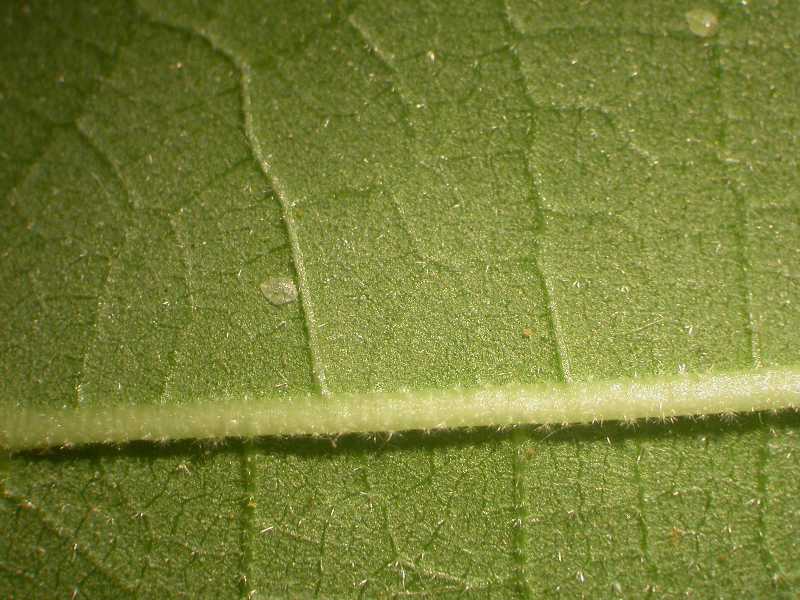 |
| Whitefly larva (Hemiptera) on flowering maple (Abutilon) |
|
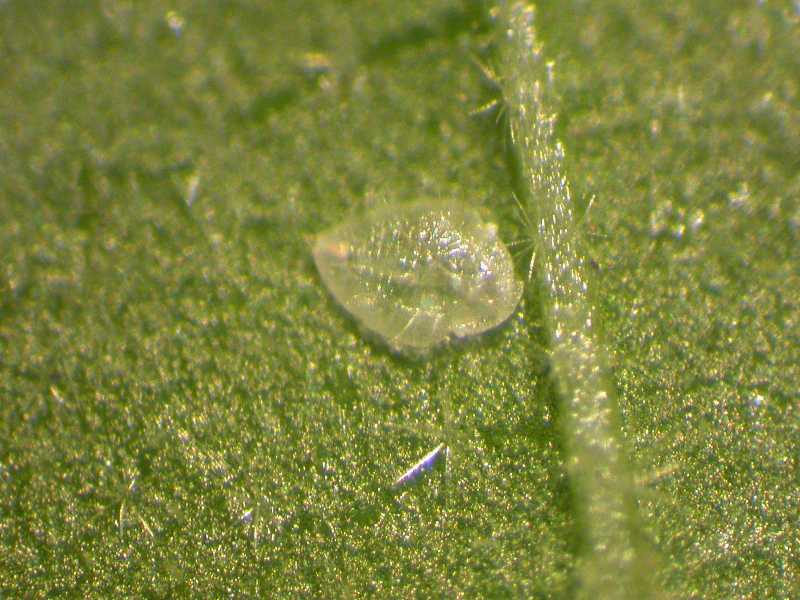 |
| Whitefly larva (Hemiptera) on flowering maple (Abutilon) |
|
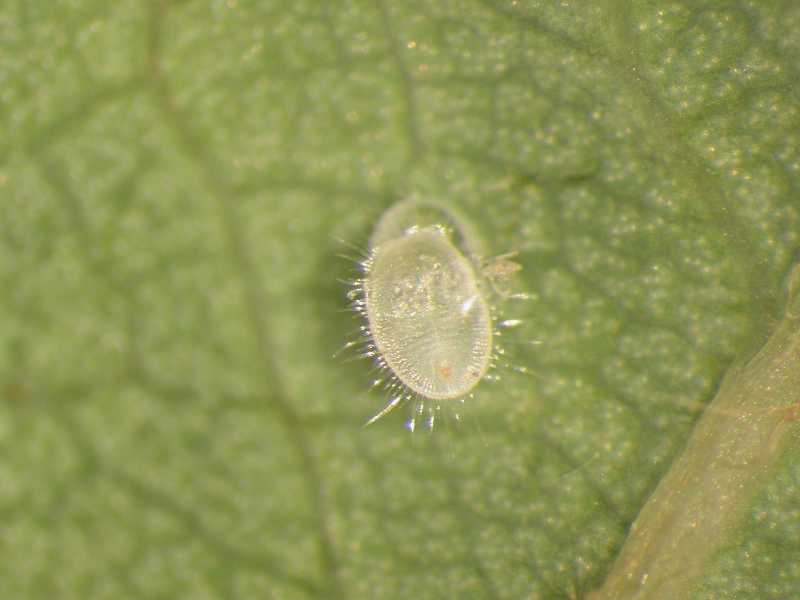 |
| Whitefly larva (Hemiptera) molting on flowering maple (Abutilon) |
|
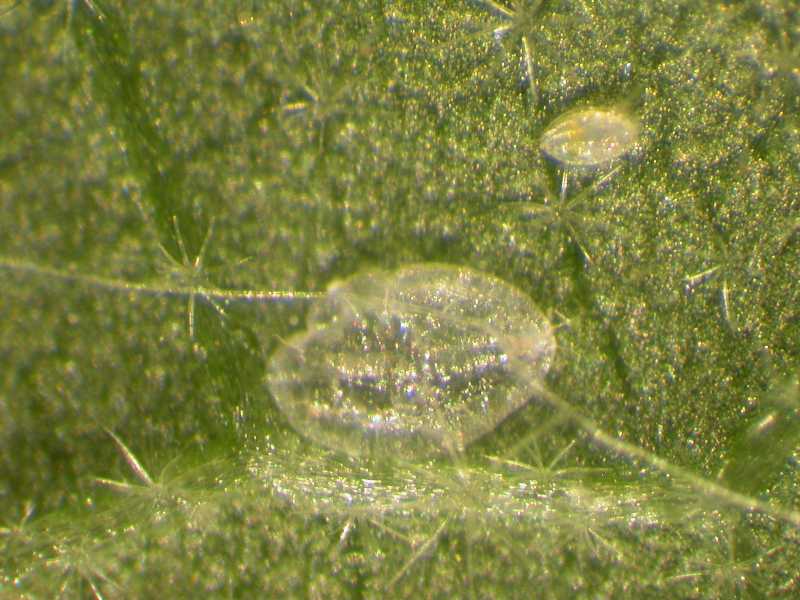 |
| Whitefly larva (Hemiptera) on flowering maple (Abutilon) |
|
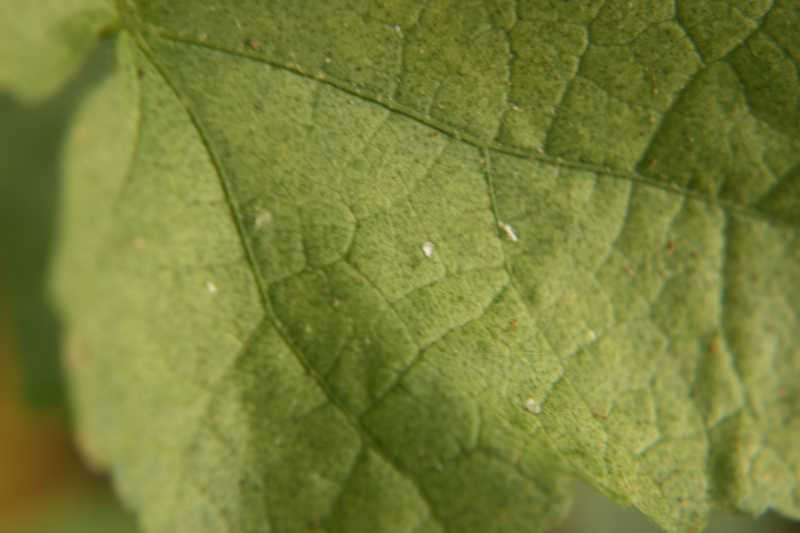 |
| Stippled feeding damage from whitefly (Hemiptera) on flowering maple (Abutilon) |
|
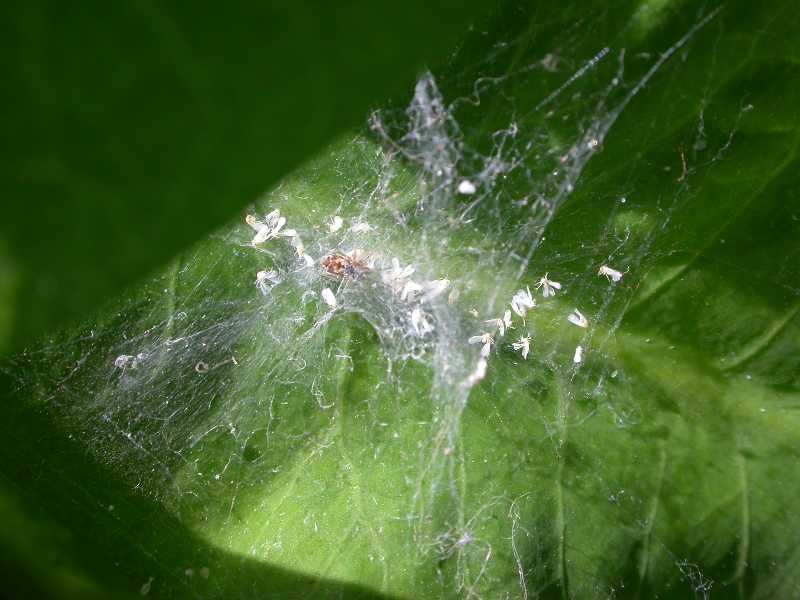 |
| Whiteflies (Hemiptera) caught in spider web (Araneae) on crown of thorns (Euphorbia milii) |
|
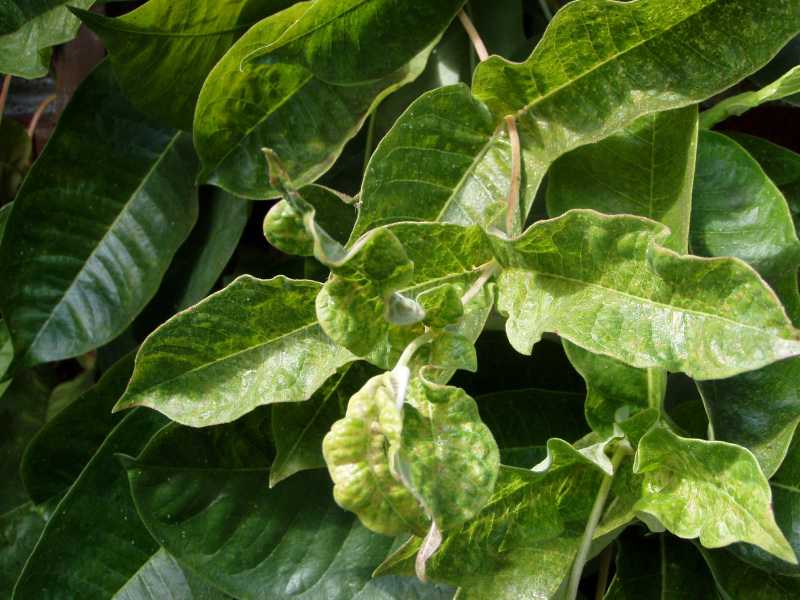 |
| Distorted leaves caused by whitefly (Hemiptera) feeding on mandevilla (Mandevilla) vine |
|
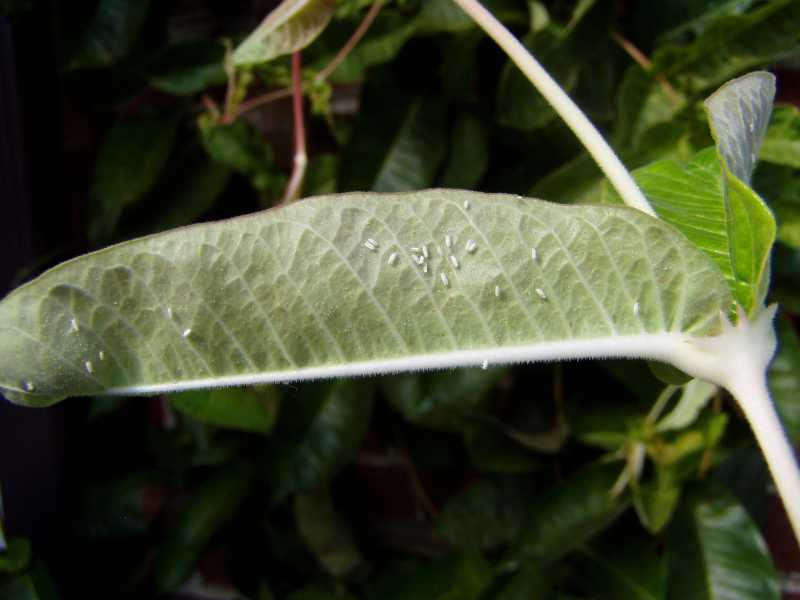 |
| Whitefly (Hemiptera) on the underside of a mandevilla (Mandevilla) leaf |
|
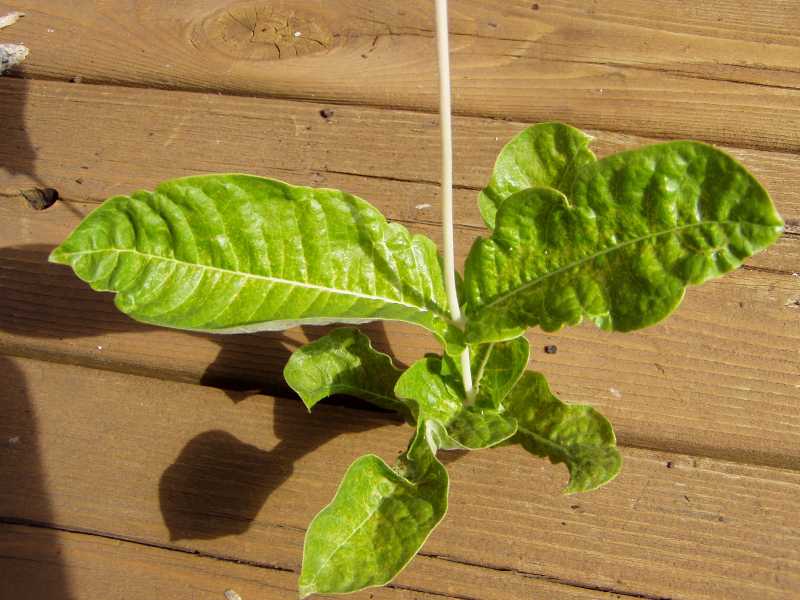 |
| Damage on mandevilla (Mandevilla) caused by whitefly (Hemiptera) |
|
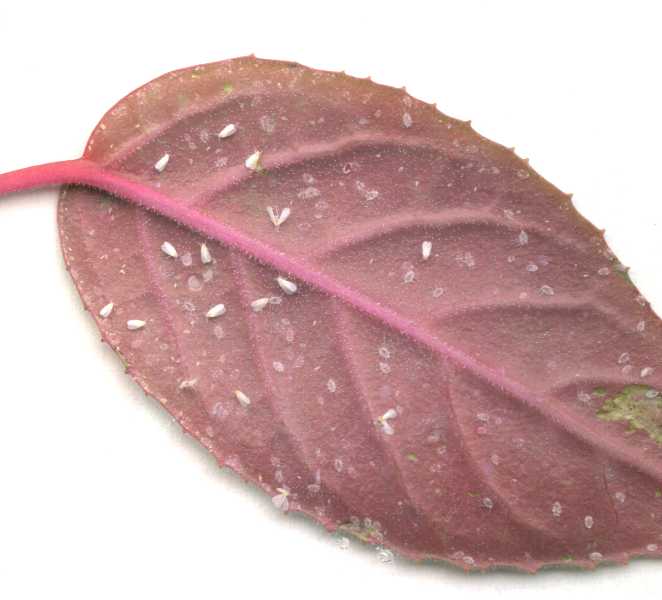 |
| Whitefly (Hemiptera) on underside of fuchsia leaf (Fuchsia) |
|
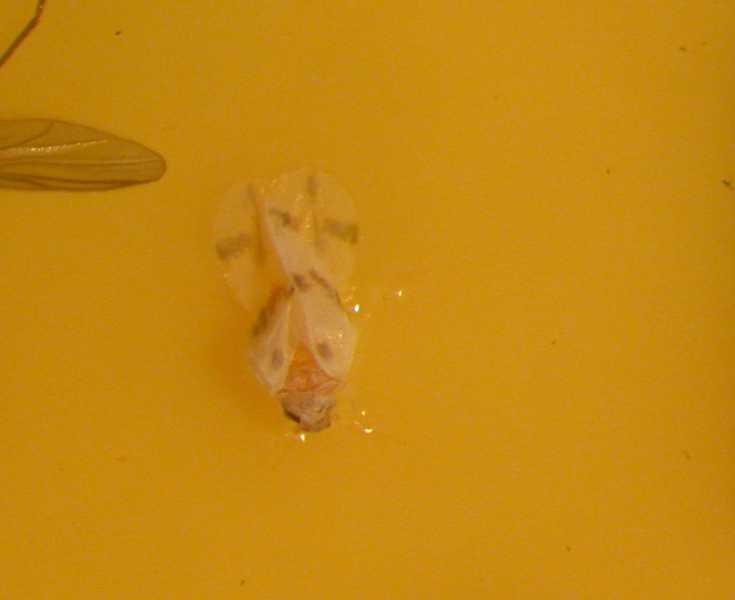 |
| Whitefly adult, possibly a red-banded whitefly (Hemiptera), caught on a yellow sticky trap |
|
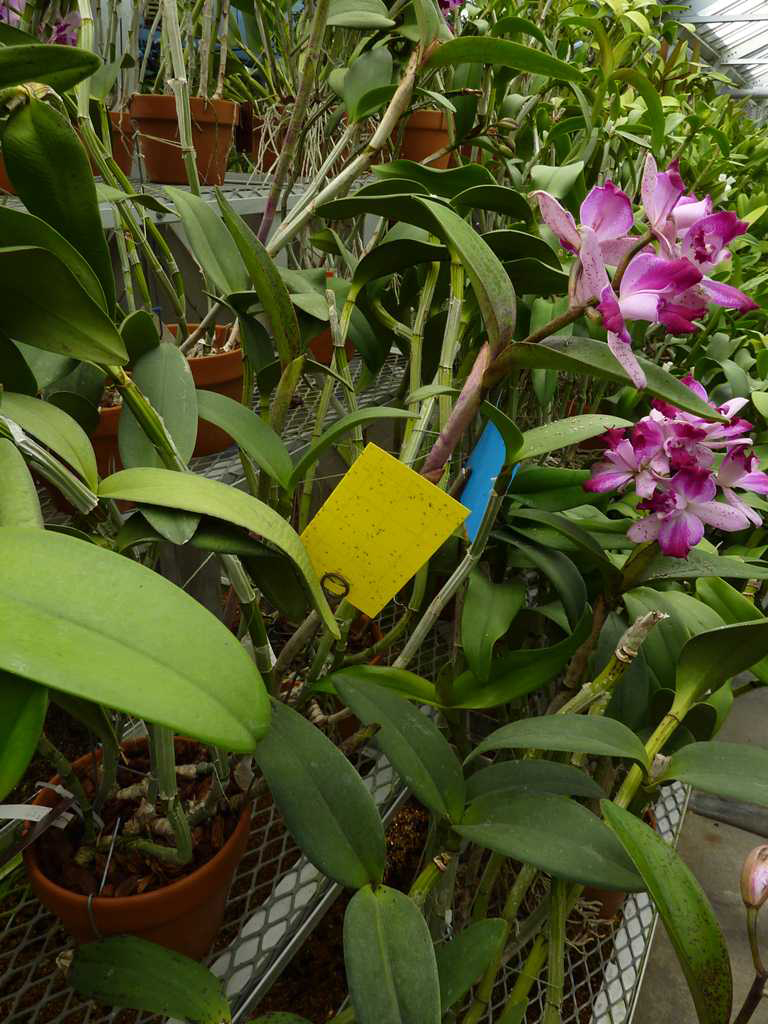
|
Yellow sticky trap used to trap adult fungus gnats (Diptera), whitefly (Hemiptera) and other flying insects.
|
|